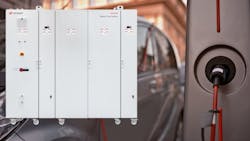Determining AC Power Requirements for Battery Testers (Download)
One major factor driving the lithium-ion battery industry’s rapid growth is adoption of electric vehicles (EVs) into the mainstream market. While EVs represent less than 5% of the cars on the road today, environmental concerns, global warming, government mandates, consumer preference, oil supply, and gas prices are driving automakers to accelerate their plans to bring EVs to market.
Hence, as EVs go mainstream, cell and battery makers will face the following challenges that impact their design, test, and validation equipment:
- Utilize and test higher-voltage batteries in EVs for efficiency.
- Grow the number of test systems operating in their lab.
- Manage huge volumes of data to achieve insight.
- Use energy efficiently during energy-intensive testing.
